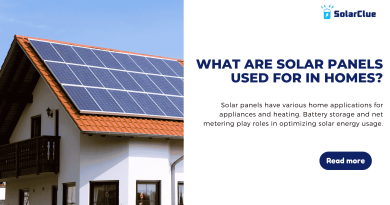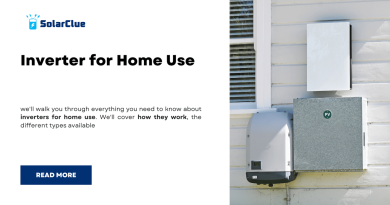What Is The Effect Of Shading On Solar Panels?
Shading is one of the most significant factors that can negatively affect the performance of solar panels. Even a small amount of shade on a solar panel can lead to a substantial reduction in energy production. This guide explores the impact of shading on solar panel output, the concept of shading losses, and provides practical tips for identifying and mitigating shading issues.
Table of Contents
- 0.1 1. The Impact of Shading on Solar Panel Output
- 0.2 2. Understanding Shading Losses and Their Effects
- 0.3 3. Identifying Shading Sources (Trees, Buildings, Chimneys)
- 0.4 4. Mitigating Shading Through Pruning, Trimming, or Relocation
- 0.5 5. The Role of Solar Panel Optimization in Reducing Shading Effects
- 0.6 6. The Impact of Shading on System Design and Sizing
- 0.7 7. Government Policies and Incentives for Addressing Shading Issues
- 0.8 8. Case Studies of Successful Shading Mitigation Strategies
- 0.9 9. The Future of Solar Panel Technology and Its Ability to Overcome Shading Challenges
- 1 FAQs About the Impact of Shading on Solar Panel Performance
- 2 Table: Comparison of Shading Mitigation Strategies
- 3 Conclusion
1. The Impact of Shading on Solar Panel Output
Solar panels rely on direct sunlight to generate electricity. When shading occurs, it blocks sunlight from reaching the solar cells, reducing the amount of energy they can produce:
- Partial Shading: Even partial shading of a single panel in a solar array can drastically reduce the system’s output. This is because most solar panels are connected in series, and shading one panel can limit the current flow in the entire string.
- Complete Shading: If an entire panel or string is shaded, the power output from that section can drop to near zero, significantly impacting the overall efficiency of the system.
- Seasonal and Daily Variations: Shading can vary throughout the day and year, depending on the position of the sun and the presence of shading objects like trees, buildings, and chimneys.
2. Understanding Shading Losses and Their Effects
Shading losses refer to the reduction in energy production due to the presence of shade on solar panels:
- Electrical Mismatch: In a series connection, shading causes an electrical mismatch, where shaded cells produce less current than unshaded ones. This mismatch can lead to significant power losses.
- Hot Spots: Shaded cells can turn into resistive loads, causing localized heating known as hot spots. These hot spots can damage the solar cells and reduce the lifespan of the panel.
- Bypass Diodes: Many solar panels are equipped with bypass diodes to mitigate the impact of shading. These diodes allow the current to bypass shaded cells, reducing power loss but not eliminating it entirely.
3. Identifying Shading Sources (Trees, Buildings, Chimneys)
Identifying potential shading sources is crucial for optimizing solar panel performance:
- Trees: Overhanging branches or nearby trees can cast shadows on solar panels, particularly as they grow over time. Seasonal changes can also affect shading as leaves fall or grow back.
- Buildings: Nearby buildings, especially tall ones, can create significant shading issues. The position of the building relative to the sun’s path will determine the extent of shading.
- Chimneys and Vents: Roof obstructions like chimneys, vents, and antennae can cause shading on specific areas of the solar array, leading to localized performance drops.
4. Mitigating Shading Through Pruning, Trimming, or Relocation
Mitigating shading is essential for maintaining optimal solar panel performance:
- Pruning and Trimming: Regularly pruning and trimming trees can reduce shading. Ensure that any branches overhanging the roof are trimmed back to minimize their shadow on the panels.
- Relocation of Panels: In some cases, relocating solar panels to another part of the roof or property with better sun exposure might be necessary. This is particularly relevant if a new structure or tree growth creates shading.
- Roof Modifications: Minor roof modifications, such as relocating vents or chimneys, can help reduce shading and improve solar panel performance.
5. The Role of Solar Panel Optimization in Reducing Shading Effects
Solar panel optimization can help mitigate the impact of shading on energy production:
- Microinverters: Unlike traditional string inverters, microinverters are installed on each panel, allowing each one to operate independently. This reduces the impact of shading on the overall system.
- Power Optimizers: Power optimizers work similarly to microinverters, optimizing the performance of individual panels and reducing the impact of shading on the system’s efficiency.
- Smart Panels: Some modern solar panels are equipped with built-in optimization technology that helps minimize shading losses by adjusting the output of each cell or section of the panel.
6. The Impact of Shading on System Design and Sizing
Shading considerations should be integrated into the design and sizing of a solar system:
- System Sizing: When designing a solar system, it’s important to account for potential shading losses by slightly oversizing the system to compensate for reduced efficiency.
- Panel Placement: Careful placement of solar panels can minimize shading. This might involve using specialized software to model the sun’s path and predict shading patterns throughout the year.
- Tilt and Orientation: Adjusting the tilt and orientation of solar panels can help reduce shading. Panels facing south (in the Northern Hemisphere) generally receive the most sunlight, but adjustments may be needed depending on shading sources.
7. Government Policies and Incentives for Addressing Shading Issues
Various government policies and incentives can help address shading issues:
- Shade Management Programs: Some regions offer programs to assist homeowners in managing shade from trees or other obstructions that impact solar panel performance.
- Incentives for Optimization Technology: Government incentives and rebates may be available for installing optimization technology like microinverters or power optimizers to mitigate shading effects.
- Zoning and Building Codes: Local zoning laws and building codes may provide guidelines or restrictions on tree planting, building heights, or other factors that could cause shading on solar installations.
8. Case Studies of Successful Shading Mitigation Strategies
- Residential Solar Installation in New York: A homeowner experienced shading from a large oak tree that reduced their solar system’s efficiency by 20%. By trimming the tree and installing microinverters, the shading loss was reduced to less than 5%, significantly improving energy production.
- Commercial Building in California: A commercial building with nearby skyscrapers faced shading issues throughout the day. By relocating the panels to another section of the roof with less shading and using power optimizers, the company was able to increase its solar energy output by 30%.
9. The Future of Solar Panel Technology and Its Ability to Overcome Shading Challenges
Advances in solar panel technology are helping to mitigate the effects of shading:
- Bifacial Panels: Bifacial solar panels capture sunlight from both sides, increasing energy production and reducing the impact of shading on the front side of the panel.
- Shading-Tolerant Panels: New technologies are being developed to create shading-tolerant panels that can continue to operate efficiently even when partially shaded.
- Artificial Intelligence (AI) and Smart Monitoring: AI and smart monitoring systems can predict shading patterns and adjust the system dynamically to optimize performance, even in partially shaded environments.
FAQs About the Impact of Shading on Solar Panel Performance
Q1: How much does shading reduce solar panel efficiency?
A1: Even small amounts of shading can reduce solar panel efficiency by 10-30%, depending on the extent and duration of the shading.
Q2: Can shading damage my solar panels?
A2: Shading can cause hot spots, which may damage solar cells over time. However, most modern panels have bypass diodes to mitigate this risk.
Q3: How can I identify potential shading issues on my property?
A3: Use tools like solar pathfinders or online shading analysis software to map out potential shading sources, or consult a solar installer for a professional assessment.
Q4: What are the best methods to reduce shading on my solar panels?
A4: Pruning trees, relocating panels, and using optimization technology like microinverters or power optimizers are effective ways to reduce shading.
Q5: Can microinverters or power optimizers eliminate shading losses?
A5: While they can significantly reduce shading losses, they cannot eliminate them entirely. Proper system design and shading management are still important.
Q6: Does shading affect the payback period of my solar system?
A6: Yes, shading can extend the payback period by reducing the system’s overall efficiency. Mitigating shading can help maintain a shorter payback period.
Q7: Are there government incentives for reducing shading on solar panels?
A7: Some regions offer incentives for installing optimization technology or participating in shade management programs to improve solar panel performance.
Q8: Will future solar panel technologies be better at handling shading?
A8: Yes, advances in technology, such as bifacial panels and AI-driven systems, are expected to improve the ability of solar panels to handle shading in the future.
Table: Comparison of Shading Mitigation Strategies
| Mitigation Strategy | Effectiveness | Cost | Best For | Challenges |
|---|---|---|---|---|
| Tree Pruning/Trimming | High | Low | Residential installations | Requires regular maintenance |
| Relocation of Panels | High | Moderate | New installations, severe shading | Limited by available space |
| Microinverters | Moderate to High | Moderate to High | Systems with partial shading | Higher upfront costs |
| Power Optimizers | Moderate to High | Moderate | Systems with varied shading | Requires compatible inverter |
| Smart Monitoring Systems | Moderate | Moderate to High | Large or commercial systems | Requires sophisticated technology |
Conclusion
Shading can have a significant impact on the performance and efficiency of solar panels. By understanding the causes of shading, implementing effective mitigation strategies, and utilizing modern optimization technologies, you can minimize shading losses and maximize the energy production of your solar system.



